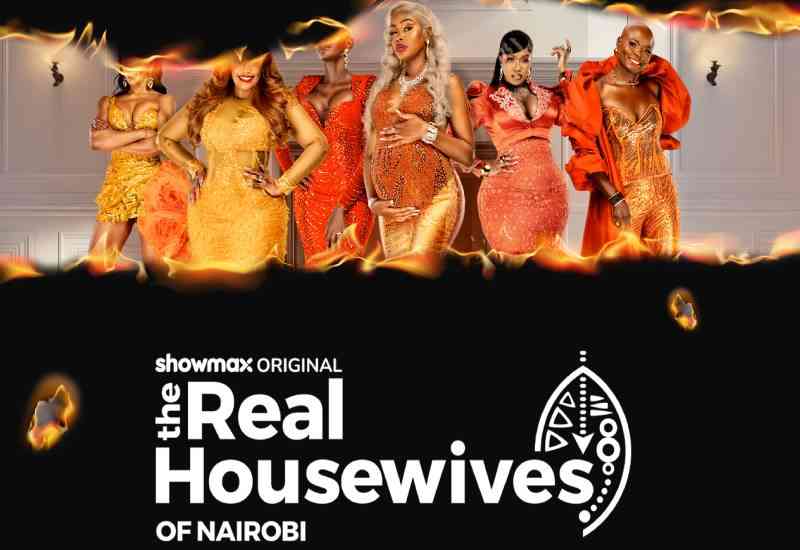
It has been seven years since I travelled this road, July 10, 2014 to be exact. Chilly, quiet lonely and dead as a dodo.
This Guthera Lane in Nairobi’s South B estate feels desolate. There is a parking yard with over grown grass covering an old car. The vintage souped-up rides that used to characterise the home of East Africa’s celebrities Ogopa Deejays studio are nothing on sight.
The famous studio that opened its doors to the revolution of Kenya’s music industry has its metallic outer door and walls looking freshly painted. As I knock the door, I feel a sense of déjà vu. But no response from inside. No movement either, not even a slight tune from the home of the Boomba beat, otherwise known as Kapuka.
“Wanakujanga tu. Leo sijawaona (They usually come. I haven’t seen them today,” a security guard tells me, lazily striding off my way as if disinterested in giving me more attention.
“Bado wanarecord (do they still record)?” I ask as if not aware of the changes that have taken place here in the last years.
It has been two months of a follow-up until this day. After reaching out to Lucas Bikedo, who together with his brother Francis have been running the famed stable, for weeks with unyielding promises of meeting, I am here to establish a fact or two for myself.
I had been in communication with a number of former Ogopa Deejays musicians to establish what happened to their singing careers since their exit.
From former talent managers Banda Emmanuel and Robertta Kithimba, to Kennedy Odhiambo aka Kenzo Matata of the Mama Milka fame, Colonel Mustafa who together with Nasty Thomas formed the Deux Vultures duo, Godfey Mtatah (Trapee) who is remembered for My Vidoyo and Mary Maina (Marya) whose Chokoza 2010 club hit with Judith Nyambura (Avril) made her a household name, all these give accounts of the last moments of the Ogopa Deejays we all loved.
It had been one of the biggest recording stables of the 2000s.
Known for its trademark ‘fearless head’ logo, Ogopa Deejays was the home of East Africa’s new generation showbiz stars among them Swabri Mohammed, better known by his stage name Redsan, Musa Ssali (Bebe Cool) and Joseph Mayanja (Jose Chameleone).
The Boomba beat was influenced by African drums and rhythms fussed with an urban hip hop and dancehall tune that was unique for its bass hook. In 2001, Ogopa Deejays released its first compilation album that introduced the next wave of big stars like the late E-sir and K-Rupt as well as Nameless. Others are Big Pin, Tatuu, Kleptomaniax, Mr Googz and Vinnie Banton, Longombas, Wahu, Deux Vultures, Jaguar and Amani.

Boomba beat
“Back then, our plan was to pupularise the Boomba beat and that is why we came up with the Ogopa Productions and the town-to-town events where we would have concerts and club gigs. We also had a good relationship with entertainment joints as well as the media and this too was a strategy to keep our publicity strong,” says Banda.
“Too, there was a lot of professionalism on play. Our music quality was high and we had a clear calendar on when to push certain projects and artistes. We also taught our musicians the need to work as a team and pull each other up. It was like living in a family. We moved together. We worked together. We were one.”
“The battle for supremacy was on because our music was more hip hop. We were creating hip hop beats while Ogopa Deejays were doing a club beat. That used to bother us until one day Clemo (Clement Rapudo) decided to come and talk to me for us to change our style. We used to have albums called Operation Fagia. We realised that Ogopa were actually deejays and there were clubs they had agreements with.
“Operation Fagia was simply there to counter the Ogopa Deejays popularity,” says Nonini (Hubert Nakitare), one of the pioneer directors of Calif Records, the recording stable that was in main competition with Ogopa Deejays back then – having started the Genge genre.
Ironically, the people behind Ogopa Deejays — Francis and Lucas Bikedo — never wanted to disclose their identify and have remained media shy until this day. Anyone who has ever been privileged to get their photos during a social event or concert must count themselves lucky. They maintain that they wanted their work to speak for them.
“When we formed the Ogopa record stable, our motto was to create employment for young, talented musicians. Working against all odds, we chose to create a new showbiz wave,” Lucas told this writer during a previous interview.
“For us, joining the showbiz industry was neither a hobby nor money-minting endeavour. After all, we were famed deejays making good cash and living from spinning in clubs and having a lucrative contract with the Homeboyz who were the only existing formidable showbiz group in Nairobi back then.
“Starting Ogopa was a calling. We were out to bring a showbiz revolution not only in Kenya but also all over Africa,” he said, recalling fallen stars E-Sir, K-Rupt and Wicky Mosh as the pacesetters behind the whole revolution to the memory of E-Sirs Leo ni Leo and Nameless’ Megarider chartbusters.
According to Lucas, Ogopa’s strategy to take over the music scene was working with a group they could manage and help in producing competitive music. Their idea was to set a benchmark.
They managed to avoid their perceived competition and at times rumoured rivalry with rising stables such Jomino, and Grandpa as well as Calif Records and Ted Josiah’s Blu Zebra.
Instead, they opted to diversity and conquer new territories. Ogopa Production set base in South Africa and Namibia where their off-shoot, the Ogopa Butterfly stable started working with top groups like Gal Level, Kalaharis, Snazzy and The Angles. And with the expansion into advertising and film making seemingly diverting their focus from music production, Ogopa Deejays artistes started for fade out, their music power weakening, their fame diminishing.
During the interview with Lucas, Ogopa’s move to southern Africa was not due to the competitive nature of the current showbiz industry in the region but was rather a timely move to capture new markets in a land that created opportunities for them.
It wasn’t just about the expansion. After 2010, Ogopa Deejays started experiencing a revolt from within.
One of the long serving Ogopa producers Philip Makanda branched off to form Main Switch Group, an event management company, recording studio and a record label. The move had a hidden hand. Jaguar, who had at the time become the main star at Ogopa, was part of the revolt.
Revolt
The onslaught had another big catch – Banda, the long serving Ogopa Deejays talent manager was part of the new move. At the time, Alfi, the other Ogopa Deejays producer was spending most of his time pushing Ogopa’s projects in the South as home ground situation started to shift.
When we spoke to Banda a few weeks ago, he was a jubilant man as he indicated that Main Switch was doing well.
“I am still around. I didn’t disappear. You should visit us. We are doing fine,” he said but was tight-lipped about the controversial events in 2014 that saw all Ogopa’s main artistes lose their contracts with the production house moving to filming productions.
“I still work with Lucas in many areas. He has been involved in most of my projects in one way or another. Besides, I have made many milestones since the Ogopa days. I have a family and I started a business. I also have a new management team handling my music career,” Kenzo said, noting that he has no hard feelings against Lucas and team.
We traced Trapee to Dubai where he has been working since then. Marya got married, got separated and moved on, music forgotten. Mustafa is working on his comeback and Avril has a new music tune, thanks to her new management team.
But don’t be deceived. The Ogopa dynasty isn’t dead yet. Lucas emerged the Best Sound design winner in the last Kalasha Awards, with the production he was involved in, 40 Sticks, carrying the day.
 The Standard Group Plc is a multi-media organization with investments in media
platforms spanning newspaper print
operations, television, radio broadcasting, digital and online services. The
Standard Group is recognized as a
leading multi-media house in Kenya with a key influence in matters of national and
international interest.
The Standard Group Plc is a multi-media organization with investments in media
platforms spanning newspaper print
operations, television, radio broadcasting, digital and online services. The
Standard Group is recognized as a
leading multi-media house in Kenya with a key influence in matters of national and
international interest.



